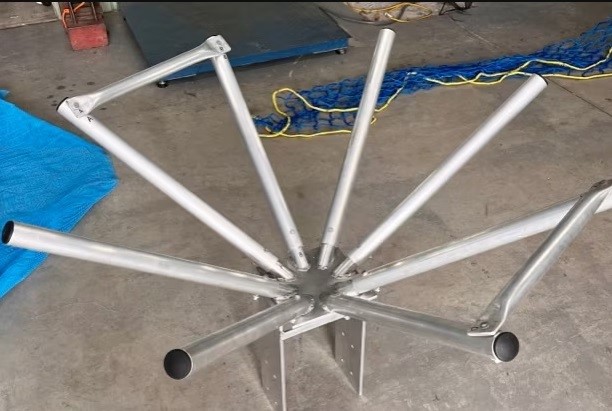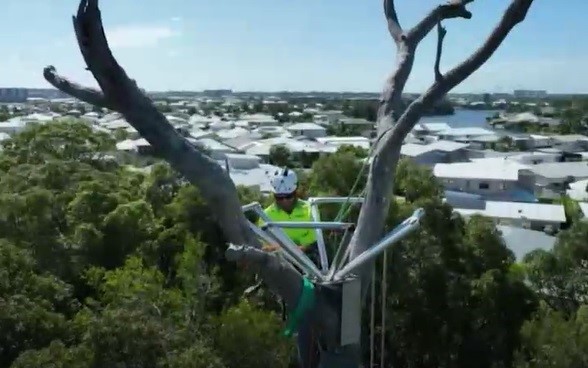

Sunshine Coast Council has just finished a daring treetop expedition, where they have repaired and restored the nest of ospreys and their children, which was severely destroyed by a storm two years ago. Wildlife professionals have used aluminium to construct a basket to strengthen the new nest, offering a sturdy foundation for the nest that the council hopes the couple will build during mating season.

The aluminium osprey basket snuggled into a natural wood tree structure, making it easier for the council to maintain the original hardwood timber tree branches on which the birds rest. The raptors' artificial nesting block was situated at the top of a nesting pole, between specially constructed frames of tree branches.
"The decision was made not to create an artificial nest structure there because we wanted the birds to be able to naturally rebuild — as they had before. Fast forward a breeding season, and the birds had not naturally rebuilt. The community were again saying, 'The birds haven't rebuilt their nest — it's time for us to intervene," said council conservation officer Kate Hofmeister.
Ospreys have a white head with a black stripe down the neck and through the eye. Their back is dark brown, while their breasts and tummy are primarily white. Females have browner flecking around their collars. They feature unique bent wings and a short, square tail in flight.

Sunshine Coast Council has been in charge of the Birtinya nesting platform and was notified by locals when the breeding couple failed to return to repair the nest. The council hired David Sullivan, an expert in creating wildlife bridges, who stated restoring the osprey nest would be difficult.
A specialised climber measured the tree branches that served as the basis of the nest building. Mr Sullivan then designed and built aluminium poles winched up and soldered into position. The foliage was also connected to the nesting box, according to Mr Sullivan, to encourage the birds to contribute their nesting material.
"As soon as our team retreated … they looked up and the birds had brought up a fish and started eating it up there. When we interfere with any animal's habitat area, we are taking a risk that they are going to reject that habitat after we have changed it,” added Hofmeister.
Responses








